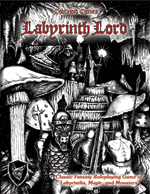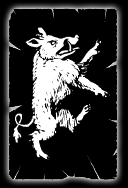by Sawith, Chief Scribe of Kaladar
Tarandis Forges Iron
Noffel’s status as chief of the Zapars was passed on to his son, Marak, and then to Marak’s eldest son, Boros, and so on to Boros’ eldest daughter Arwas. Fourteen more generations passed between the chiefdom of Arwas and the chiefdom of Hara the Wise. From Hara the chiefdom passed to Hara’s third son Donok, from Donok to Donok’s eldest son Paro, to Paro’s second son, Arwos, and so on to Arwos’ eldest daughter, an able and compassionate woman called Bara. Bara herself had no husband and no children, so upon her reaching elderhood, the leadership of the tribe passed to a nominee of the tribal council, a young man named Tarandis. Tarandis was brave, outspoken, and highly intelligent. He honored the old ways, but inwardly he longed to see change for his tribe. The Zapars by this time numbered in the several thousands; the year was 871.
In the long years since Noffel’s visit to the village of the Aldors, the people of the Lady of the Wood had been granted many more blessings. By the year of Tarandis’ being named chief of the Zapars, two in three Aldors was born with some sort of magical ability. Some could heal wounds; some could fly; others could speak to the spirits of the trees; still others could conjure flames or light. The Aldors still honored the old pact between Lumar and Noffel, and they never used their powers boastfully or with pride, or to get the better of someone from a different tribe. They used their blessings to heal themselves and to honor their connection with Aldor, the Lady of the Wood.
There were many amongst the Zapars and other neighboring tribes who were envious of the fact that Aldor seemed to be making her people so powerful; and over the centuries this envy turned to anger and fear. But they knew of the old pact between Noffel and Lumar, and kept their feelings to themselves, boiling inwardly.
Tarandis, meanwhile, was keenly interested in Noffel’s boyhood discovery. The lump of heavy, gray ore that the long-passed chief had kept near him all his life, now resided in the Zapar tribe’s hall of artifacts, watched over by the shaman, Barru. Tarandis frequently discussed his feelings about the significance of the lump of metal with Barru. A few years into his chiefdom, he conceived a plan.
The young chief sent groups of able-bodied Zapars into the hills to seek out more of the mysterious ore. He also asked Barru to gather together tribes-people of intelligence and creativity, to serve as an investigative team. Tarandis wanted the ore tested in every conceivable way: burned, buried, submerged in water, drenched in fish oil, smashed, chopped, and prayed over. The chief had a strong feeling about the strange ore, but he did not yet know its exact significance.
Two years passed by, then five, ten, fifteen. The testing of the ore went on, to no avail. The ore was very strong, resisting breakage or shaping of any kind, even when exposed to flame.
Then, in the beginning of 889, at the Feast of the New Year, a great discovery was made. The tradition at this feast was to bake an entire school of sunfish in a large, underground pit, lined with hot river rocks and kept burning for three straight days prior to feasting day. By this time, Tarandis had all but given up on his quest for the meaning of the ore, but he persuaded Barru to place some hunks of the ore into the baking pit with the river rocks. This was done, and on the third day, lo! the ore glowed orange-white, and when beaten with heavy stones it could be shaped and made into implements! That year, the Feast of the New Year honored more than the bounties of the past season; it also celebrated this wondrous new discovery. Many speeches were made and songs were sung, praising the name of Noffel, the legendary chief who found the ore, and Tarandis, the bold young chief who found its purpose.
Now by this time, the settlements of the Zapars were spread over a much larger region than in chief Noffel’s day. Their villages extended well into the very hills that Noffel’s father had warned him away from as a boy. The Zapar people dwelling in these hills were sometimes attacked and killed by trolls, the great bipedal monsters that roamed the highlands. The Zapars were peaceful people and had little defense against these attacks; most accepted them as an unalterable truth of their lives. But the discovery of this new metal, which came to be known as iron, led some of the hill dwellers to realize that a defense against the trolls was now a possibility. For iron, unlike stone or even kapar, could hold its shape (and an edge) once cooled, and was much harder than any other substance known to the Zapars. In short, weapons could be forged out of iron that would hold up against the rock-like skin of the trolls.
So a group of hill people went to chief Tarandis, asking that bladed weapons be made out of the iron, so that the highland Zapars might repel the attacks of the trolls. According to the etched records of the time, Tarandis and the tribal elders sat in council for “many days” discussing this issue, for weapons, other than spears with which to hunt and fish, had never been a part of their lives before.
In the end, the fear and insistence of his people must have swayed Tarandis, for late that year, the weapons were made: long, straight, double-edged weapons called swords.
It appears that the swords were effective against the encroaching trolls, and the hill-dwelling Zapars were able to cast back the shadow of fear that had haunted them for so long.
However, there were others amongst the Zapars who saw that these powerful new weapons could be put to an entirely different purpose.
Hasc’s Massacre and the Sundering of the Aldors
One night in the winter of 896, a group of Zapars led by a man named Hasc journeyed to the village of Nurna, the forest home of the Aldors. These Zapars brought swords, and their intent was to show the Aldors their own power, and cast out their own fears by throwing fear into their neighbors. But these were ignorant people who did not see that fear only breeds more fear—and feelings even more destructive.
Hasc’s group came upon the sleeping village an hour before daybreak, and Hasc said:
“Let us wait until dawn to show ourselves. Their sorcery is worse by the light of the moon.”
His companions agreed. But shortly before sunrise, a Nurnan villager out walking before his daily work came upon the Zapars’ hiding place unknowingly, startling one of the men. A sword was drawn and swung in a rush, and in the space of a second, the Nurnan villager lay mortally wounded, crying out in agony on the forest floor. This drew other Aldors from their beds, and threw the entire Zapar group into a state of panic. Believing that they were under attack from Aldor sorcerers, Hasc and his company charged out of their hiding place with swords swinging. Many Aldors fled, or were cut down where they stood in shocked silence, but many others, hearing the anguished screams of their friend, charged into the midst of the fray, seeing too late the deadly iron blades the strangers carried.
By sunrise, many Aldors were injured or dead, and the party of Zapars led by Hasc was hastening on its way back down the trail home. Who can know what those Zapars felt? Shame? Fear? Triumph? Remorse? No record shows.
Chief Tarandis learned of the massacre early the next day, and was filled with anguish. For despite his own ambivalence toward the Aldors, he never wished them harm, and had been willing to uphold the pact established by Noffel and Lumar so long as it did not hurt his own people. Perhaps he was angry with himself for getting so involved with the forging of iron implements that he never saw how they could be put to such terrible use. Worse yet, this bloody act had been committed by his own people, without his knowing or even suspecting that it was going to occur. He felt foolish and horrified.
He set off the next day for the village of the Aldors, taking with him his advisor and friend, Sardan. Sardan distrusted the Aldors and their sorceries, and felt that things would go better for the Zapars if the Aldors left the region altogether. Tarandis knew of his friend’s feelings on this matter, but hoped that reconciliation between the two tribes could be affected.
Two days later, Tarandis entered the forest village of Nurna with a heavy heart. He saw the smoldering remains of the funeral pyre where the Aldorian dead had been cremated, and he wept with remorse and sorrow. He came before the chief of the village, Uluk, and kneeling before him, said:
“O chief of the Aldors, my kinsman! How I am filled with shame and sorrow at the sight of these pyres! How I am chilled to the core by the terrible doings of my people, and now I come before you to beg forgiveness and find a path to renewed peace and amity between our tribes.”
Uluk, whose broad face was filled with pain, replied:
“Tarandis, I know this was not your doing. I know that these deeds were done by those among your people who fear our unique powers, and that not all Zapars are of this mind. However, the Aldorian council of elders has convened and decided that our beloved forest of Nurna is not a safe haven for us any longer.” The chief looked around him at the ancient trees, whose spindly winter branches trembled in the weak afternoon sunlight, pointing accusing wooden fingers at the smoldering pyres. In this moment, Uluk remembered the forest as it appeared in summer, when the bright green leaves shimmered in the breeze, seeming to glow in the warm, translucent light of a summer’s day. His eyes welled with tears, and he said, “Aldor has spoken to our wise people. She has told us that we must go. We Aldors must leave Nurna and seek a new home.”
Sardan, excited and pleased by this news, stated:
“Your elders are truly wise in this, Uluk. Your staying here can only lead to more fear and death.”
Bitterly disappointed by Uluk’s declaration and by the indifference of his friend, chief Tarandis cried out, “Why must you go, Uluk? Could we not learn to live again as friends, and thus strengthen both of our tribes? Perhaps, in time, my own people will gain powers as your people have. Meanwhile, if we work together, we can build understanding and tolerance. Will your people consider staying?”
Uluk shook his head sadly, and took Tarandis’ hand, saying:
“Rise, my friend. You have done all you can. For my own part, I will do what I can to prevent my people from harboring feelings of hate toward you and your tribes-people. It will not be easy. We will not stay. Our elders have spoken. Now I must prepare my family for our great journey. May Zapar guide you—fare well.”
Uluk left them. Tarandis and Sardan hiked back to their own village in the hills overlooking the sea we now call the Bay of Noffel.
Four days later, the Aldors left Nurna forever. All they left behind were vacant huts and a wooden marker made up of several intertwined branches, marking the place where the funeral pyres burned.
The Coronation of Tarandis
It is through the journals of Tarkas son of Sardan that we of the contemporary era know the true story of the sundering of the Aldors and the subsequent crowning of Tarandis as the first monarch of Noffel. Until these journals came to the attention of modern historical scholars, the common belief was that Tarandis himself took up arms and drove the Aldors out of Noffel, using this event to propel himself to the kingship of the newly unified tribes. As we have already seen, the truth of the matter is quite otherwise.
In the years following Hasc’s massacre and the departure of the Aldors, Tarandis’ popularity grew, not just among his own people, but also amongst those of other smaller tribes who had feared the Aldors and were pleased to see them depart. Sardan himself did much to encourage the feeling that Tarandis had been responsible for protecting the remaining tribes against the threat of the sorcerous Aldors, and to turn this feeling toward his own ends.
By the year 899 or 900, the hill troll tribes of the southern plains had begun to venture far enough north and west of their own lands to pose a threat to the people of the al-darma. Hill trolls delight in the taste of human flesh, and with the Minochian people having vanished in the so-called Catastrophe of 787, there was nothing to come between these deadly creatures and the Noffellian tribespeople.
As more and more members of the al-darma lost their lives to raiding hill trolls throughout 900 and 901, Tarandis Chief of the Zapars commanded his people to manufacture more iron swords with which to defend their lands. These swords he distributed to able-bodied fighters in all the tribes of the al-darma, not just the Zapars.
So armed, the tribespeople were able to drive the hill trolls back into the east, and few forgot that it was Chief Tarandis who had provided them with the means for their defense.
In the early months of the year 902, a great convocation of all the chiefs and elders was held in Tarandis’ village. Sardan organized this meeting, having won the support of many of the smaller tribal leaders. His intent was to unite all the tribes of the region into a single body, with Tarandis as its supreme leader. On the one hand, this was a wise choice—Tarandis is known to history as a strong king who held the fledgling kingdom of Noffel together through its earliest, turmoil-filled years. However, it is also true that Tarandis’ rise to power elevated Sardan’s position as well.
How Tarandis felt during this time is not known to history. Neither Tarandis nor any of his direct descendants kept any journal or records we yet know of. All we know is that in the late summer of 902, at the decision of the elders and chiefs of the unified tribes, all the land between the Frey Mountains and the westernmost edge of the sea (Bay of Noffel) was named the Kingdom of Noffel, with Tarandis its king. Sardan remained Tarandis’ chief advisor and close friend through all the days of his kingship. Yet Tarkas’ journal sheds very little light on this period of history. So rather than retread ground which has already been adeptly covered by other scholars, I will forego an account of King Tarandis’ sixteen-year reign and proceed instead to the topic most significant to the history of Ara as a whole: the birth of the arch-sorceress Awra.
[Continue to Part III]
Magic Item: Mirror of Dire Portent
5 hours ago






No comments:
Post a Comment